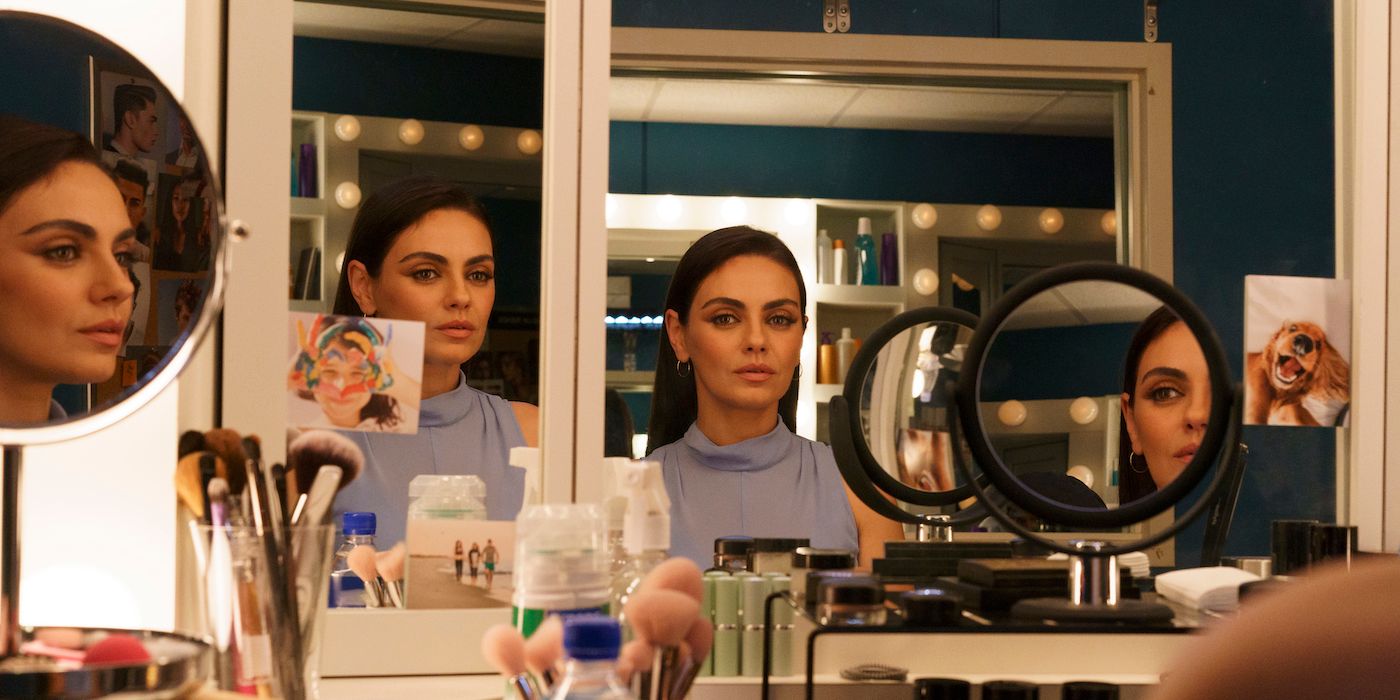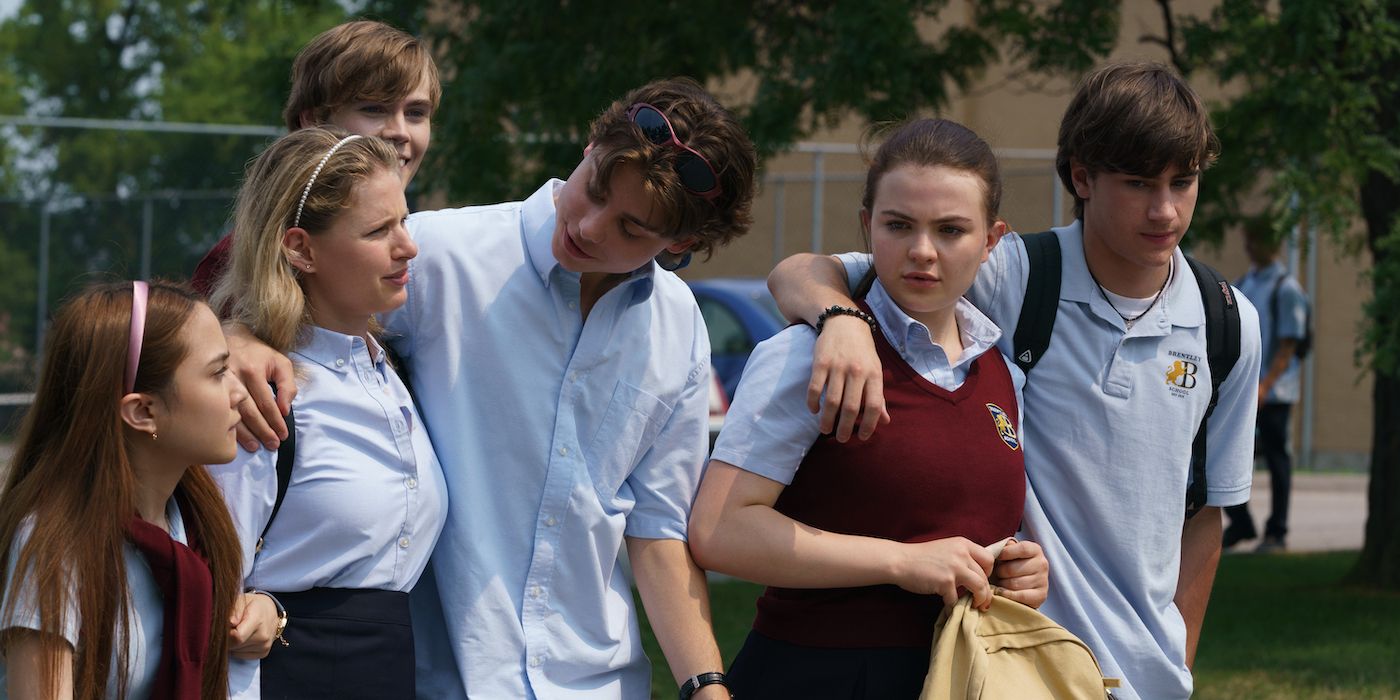When Jessica Knoll’s Luckiest Girl Alive debuted in 2015, the novel was favorably compared to Gillian Flynn’s Gone Girl and Paula Hawkins’ The Girl On The Train. Both books were eventually adapted to film, with Gone Girl becoming a massive hit. Gone Girl’s success at the box office and its positive critical reception launched Flynn into the upper echelon of screenwriters, and it ushered in numerous literary and cinematic projects that dealt with one core theme — complicated women. However, the film adaptation of The Girl On The Train, released a year after the novel debuted, was a reminder that not all books with similar traits can succeed in the transition to film. After several years of Hollywood attempting to replicate the success of Gone Girl and the push for women-led narratives that delve into the darkness of humanity, Luckiest Girl Alive and Knoll are finally getting their moment on Netflix.
Luckiest Girl Alive follows Ani (Mila Kunis), a successful 28-year-old magazine writer who seemingly has her life in order and is about to embark on a new adventure — marriage. However, Ani is hiding a secret about her days from high school, where she overcame a series of horrifying events, including a school shooting and a sexual assault. Now on the verge of a new chapter, Ani is forced to look back and wonder if she is truly happy with who she is now, or if she has honestly and genuinely moved beyond her traumatic past.
The opening of the film doesn’t quite suggest audiences will get another seminal piece of art like Gone Girl, as it neither indicates a distinct cinematic style nor does the narration by Kunis lure viewers in. Ani is a woman who has built an image of herself as the edgy, the cool girl, but with some edits. Ani explains that she is not the typical woman her fiancé would be engaged to because she isn’t some blonde; she is a survivor who has clawed her way to the top. She created a contrived version of herself that exudes confidence, success, and wealth because she is anything but. The film is about a woman working to rehabilitate her image and self-worth after enduring significant trauma. While the novel succeeds in telling that story, primarily due to Knoll’s ability to articulate her personal history through her writing, the film, also written by Knoll, cannot capture that same raw honesty.
A film’s quality relies on many parts that must work at a high caliber to achieve excellence. Luckiest Girl Alive doesn’t quite reach that potential despite some heavy lifting from Mila Kunis. It is hard to gauge just how well she does as Ani because the film’s sterile, almost mechanical presentation fails to elevate this project to the heights it aspires to reach. The quality of the script is subpar; it simply and matter-of-factly presents the events of the book. There is little nuance or creative flourish, and the heart-wrenching story of Ani’s history of sexual abuse and surviving a school shooting isn’t nearly as impactful as it should be. The content is relevant and harrowing. However, how it is delivered doesn’t hit the emotional notes when it reaches its climax. Luckiest Girl Alive purports to be edgy and shocking, but it is neither in its storytelling method. If anything, the film falls flat, skating by on the fact that the story does center a fascinating character study.
The way the film engages with Ani’s rage doesn’t manifest on screen in a stirring way despite the character articulating how that rage has steered her in life. Her narration describes her true feelings, and Kunis appropriately displays Ani’s wide gamut of emotions. But the film doesn’t adequately capture the full magnitude of her emotions — it is just stated but never truly felt. That is a problem with both the script and technical work from director Mike Barker. The film’s tepid approach also undercuts the portion of the story of younger Ani, who experiences the horrific events that shape her life. Her narrative is vital, and despite the intent to expose the darkness of the reality of her situation, the film is ultimately uneven. It's unable to bridge the dual narrative in a gratifying way. Now, audiences will have different interpretations regarding the film's effectiveness, but many may agree that both portions of Ani’s story are not fully realized.
Luckiest Girl Alive will undoubtedly resonate with audiences craving flawed women who are reckoning with society’s unfair expectations of them. There is also the undeniable pull of Mila Kunis, regardless of the quality of the film she stars in. This film proves that simply replicating events from a novel — about a very impactful story about sexual assault and trauma — won’t translate without consideration of the barriers between literature and cinema. The film never rises to exceptional heights with its visuals and doesn’t quite have the moving writing Knoll was praised for when she wrote her book.
Luckiest Girl Alive began streaming on Netflix Friday, October 7. It is 113 minutes long and rated R for violent content, rape, sexual material, language, and teen substance use.



